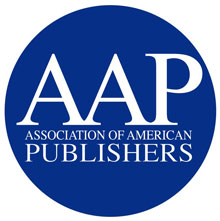September 11, 2019
Student Spending on College Course Materials Continues Multi-Year Decline

Washington, DC – Average student spending on college textbooks and course materials has steadily declined in recent years according to the latest studies by Student Watch (from the National Association of College Stores) and Student Monitor, an independent research firm. Student Watch reports a drop of thirty five percent over the past five years and Student Monitor indicates a twenty nine percent decline over the same time period.
“When it comes to acquiring course materials students have more choice – and more affordable alternatives – than ever, including rental options for both print and digital materials, loose-leaf versions and creative new distribution models such as inclusive access and subscription services,” commented Kelly Denson, Senior Director, Education Policy and Programs, AAP. “The statistics make it clear that students are taking full advantage of the new, cost-effective options that publishers have made available, which has led to a significant decline in student spending.”
Student Monitor
Student Monitor’s LIFESTYLE & MEDIA report also found that student spending on course materials went from an average of $691 for the 2014-2015 academic year to $492 for the 2018-2019 academic year.
In the most recent semester for which data is available, the report indicated that average spending on course materials went from $281 for spring of 2018, to $239 in spring of 2019, a decline of fifteen percent.
The Student Monitor findings are the result of hour-long, one-on-one, on campus interviews conducted among four-year, full time undergraduates attending 93 representative colleges and universities.
Student Watch Survey
The most recent Student Watch survey indicated a decrease in student spending. The survey indicates that course material spending dropped by an average of $45, or seven percent, every year between the 2013-2014 and 2018-2019 school years, going from $638 (2014-2015) to $415 (2018-2019). The survey involved more than 20,000 students across 42 institutions. Student Watch is funded by the National Association of College Stores (NACS) Foundation.
Options
Education publishers have long acknowledged that students struggle with overall college expenses. Since there is no such thing as a ‘one size fits all’ solution for college course materials. Education companies are addressing affordability by launching new initiatives such as Inclusive Access, which provide students with materials on the first day of class, often at a reduced cost due to the fact that they are purchased in volume. Other options like subscription models provide unlimited access to a range of textbooks, open course materials, online homework access codes and study guides all for one price.
Students continue to embrace a wide range of options for acquiring their course materials: according to the Student Monitor report, the $239 in average student spending during the spring 2019 semester included $102 for new, printed textbooks; $59 for used, printed textbooks; $47 for rented, printed textbooks; $20 for eTextbooks for unlimited use; and $11 for eTextbooks for limited time use.
Student Watch reports that, as of 2019, about one in four students (twenty six percent) preferred a strictly print textbook, down twenty one percent from its highest point in fall 2016, but down only six percent from fall 2012 when the question was first asked. Twenty-one percent of students preferred print with a digital component, which includes print books with online access or support, making the category the second most popular option.
